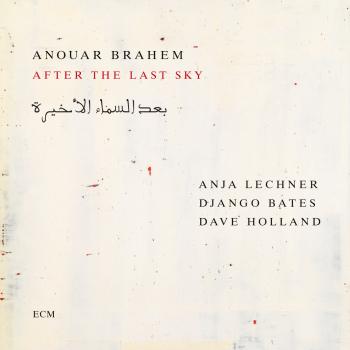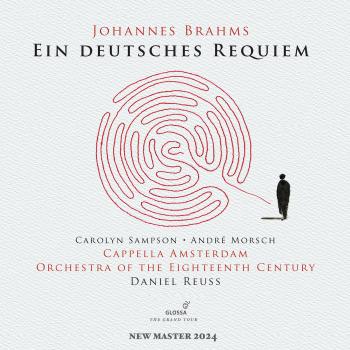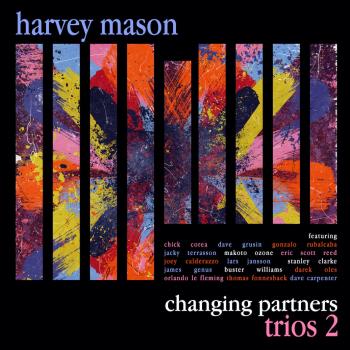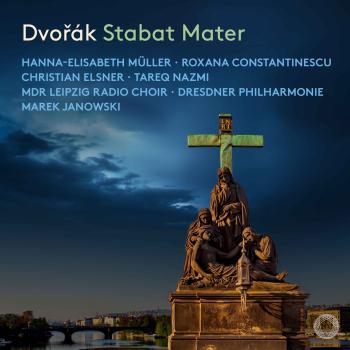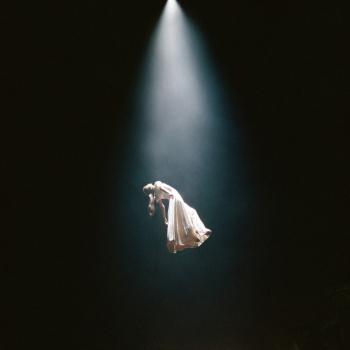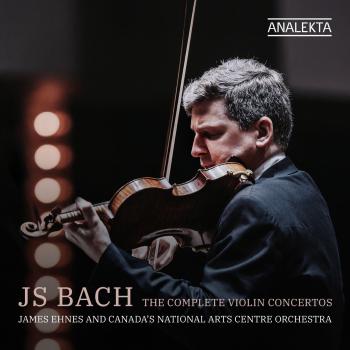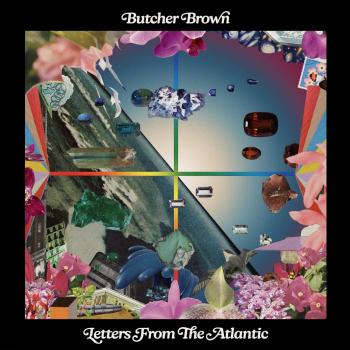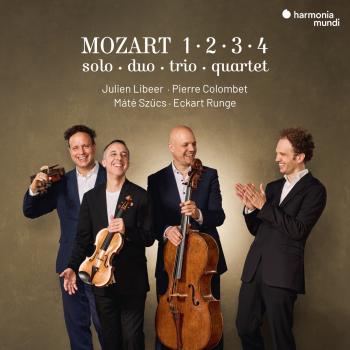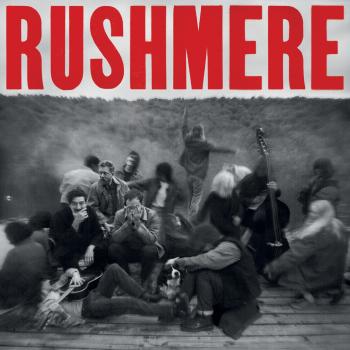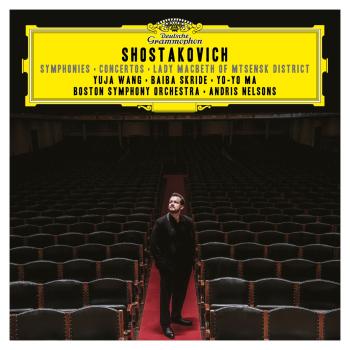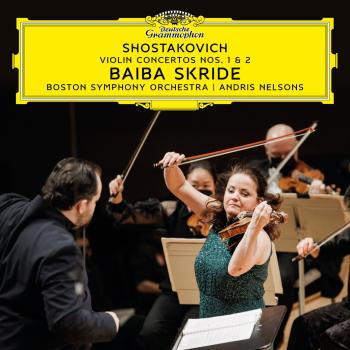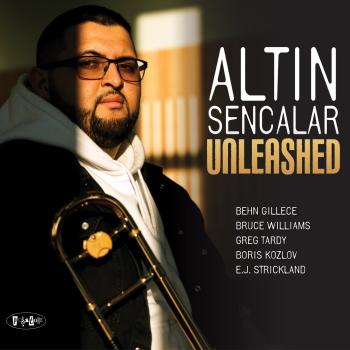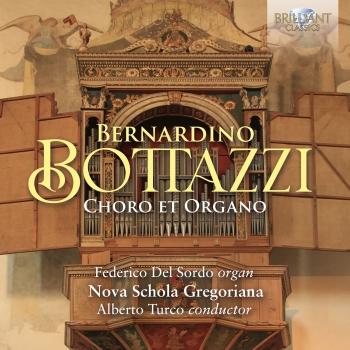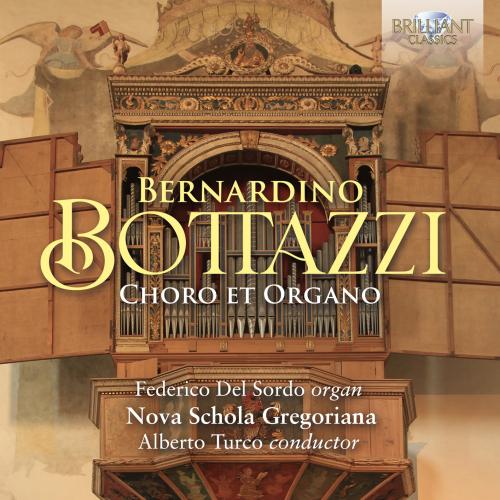
Bottazzi: Choro et Organo Federico Del Sordo, Nova Schola Gregoriana, Alberto Turco
Album Info
Album Veröffentlichung:
2023
HRA-Veröffentlichung:
01.03.2023
Label: Brilliant Classics
Genre: Classical
Subgenre: Choral
Interpret: Federico Del Sordo, Nova Schola Gregoriana, Alberto Turco
Komponist: Bernardino Bottazzi (1560-1614)
Das Album enthält Albumcover Booklet (PDF)
- Bernardino Bottazzi (1560 - 1614): In missis apostolorum & in festis duplicibus:
- 1 Bottazzi: In missis apostolorum & in festis duplicibus: I. Kyrie 05:29
- 2 Bottazzi: In missis apostolorum & in festis duplicibus: II. Gloria 10:11
- 3 Bottazzi: In missis apostolorum & in festis duplicibus: III. Sanctus 01:39
- 4 Bottazzi: In missis apostolorum & in festis duplicibus: IV. Agnus dei 01:26
- In dominicis diebus:
- 5 Bottazzi: In dominicis diebus: I. Kyrie 05:41
- 6 Bottazzi: In dominicis diebus: II. Gloria 10:15
- 7 Bottazzi: In dominicis diebus: III. Sanctus 01:33
- 8 Bottazzi: In dominicis diebus: IV. Agnus dei 01:33
- In festis beatæ Mariæ Virginis:
- 9 Bottazzi: In festis beatæ Mariæ Virginis: I. Kyrie 06:01
- 10 Bottazzi: In festis beatæ Mariæ Virginis: II. Gloria 07:54
- 11 Bottazzi: In festis beatæ Mariæ Virginis: III. Sanctus 01:45
- 12 Bottazzi: In festis beatæ Mariæ Virginis: IV. Agnus dei 01:18
- Ricercar cromatico sopra il terzo tuono:
- 13 Bottazzi: Ricercar cromatico sopra il terzo tuono 02:37
- Credo cardinale:
- 14 Bottazzi: Credo cardinale 10:49
- Credo dominicale:
- 15 Bottazzi: Credo dominicale 10:17
- Hymni per totum annum occurrentes:
- 16 Bottazzi: Hymni per totum annum occurrentes: I. Christe Redemptor omnium (ex patre patris) 02:03
- 17 Bottazzi: Hymni per totum annum occurrentes: II. Hostis Herodes impie 01:22
- 18 Bottazzi: Hymni per totum annum occurrentes: III. Ad coenam agni provide 01:31
- 19 Bottazzi: Hymni per totum annum occurrentes: IV. Iesu nostra redemption 01:41
- 20 Bottazzi: Hymni per totum annum occurrentes: V. Veni creator spiritus 01:47
- 21 Bottazzi: Hymni per totum annum occurrentes: VI. Quicumque Christum quæritis 01:43
- 22 Bottazzi: Hymni per totum annum occurrentes: VII. O lux beata trinitas 01:23
- 23 Bottazzi: Hymni per totum annum occurrentes: VIII. Pange lingua gloriosi 01:37
- 24 Bottazzi: Hymni per totum annum occurrentes: IX. Ut queant laxis 01:52
- 25 Bottazzi: Hymni per totum annum occurrentes: X. Aurea luce 01:23
- 26 Bottazzi: Hymni per totum annum occurrentes: XI. Pater superni luminis 01:17
- 27 Bottazzi: Hymni per totum annum occurrentes: XII. Ave maris stella 01:45
- 28 Bottazzi: Hymni per totum annum occurrentes: XIII. Tibi Christe splendor patris 01:32
- 29 Bottazzi: Hymni per totum annum occurrentes: XIV. Christe redemptor omnium (conserva tuos) 02:02
- 30 Bottazzi: Hymni per totum annum occurrentes: XV. Exultet cælum laudibus 01:28
- 31 Bottazzi: Hymni per totum annum occurrentes: XVI. Deus tuorum militum 01:44
- 32 Bottazzi: Hymni per totum annum occurrentes: XVII. Sanctorum meritis 01:46
- 33 Bottazzi: Hymni per totum annum occurrentes: XVIII. Iste Confessor 01:44
- 34 Bottazzi: Hymni per totum annum occurrentes: XIX. Iesu corona virginum 01:14
- 35 Bottazzi: Hymni per totum annum occurrentes: XX. Huius obtentu 01:31
- 36 Bottazzi: Hymni per totum annum occurrentes: XXI. Urbs Hierusalem beata 01:39
- 37 Bottazzi: Hymni per totum annum occurrentes: XXII. Lucis creator optime 01:43
- Beatæ Mariæ Virginis Antiphonæ:
- 38 Bottazzi: Beatæ Mariæ Virginis Antiphonæ: I. Alma redemptoris mater 01:23
- 39 Bottazzi: Beatæ Mariæ Virginis Antiphonæ: II. Ave regina caelorum 01:12
- 40 Bottazzi: Beatæ Mariæ Virginis Antiphonæ: III. Regina caeli Laetare 01:02
- 41 Bottazzi: Beatæ Mariæ Virginis Antiphonæ: IV. Salve regina 01:20
Info zu Bottazzi: Choro et Organo
Choro et Organo by Bernardino Bottazzi (1560–1614) may be considered the most extensive and best-known collection of Italian organ works from the early 17th century. In the beautiful edition printed by Giacomo Vincenti, the musical notation used relates to a tradition that is more Renaissance than early baroque: namely, Italian tablature for organ (in this case, with an eight-line stave for the left hand and one of five lines for the right).
There are 22 hymns in Choro et Organo. For some of these, Bottazzi’s organ verset is identical, for example Christe Redemptor omnium, whose melody is the same as that sung for the feast of All Saints although with a slightly different text.
We know for certain that vocal forces and organ followed a pattern of alternation which, in Bottazzi’s case, seems fully in line with the practices as evidenced by analogous works from the same period: 5 versets for the Kyrie, 9 for the Gloria, 2 for the Sanctus and just 1 for the Agnus Dei, given that – according to Adriano Banchieri (1608) – the last of the three Agnus Dei would be replaced by an organ composition, generally a canzona. It is possible that a collection of canzonas, as well as a number of Magnificats and ricercars, might have formed the basis of a hypothetical second book of Choro et Organo, given that the title on the frontispiece incorporates the standard term of ‘Libro Primo’. Regrettably, we have no information, either on such a follow-up publication, nor indeed about Bottazzi’s own life, other than his self-description as coming from Ferrara (which may only have been a city he resided in or where he took his religious vows rather than where he was actually born). Before each of the organ versets, the beautiful edition of Choro et Organo always presents the melody in cantus firmus, written on a five-line stave. In his introductory text (‘To the gentle reader’), Bottazzi states that he ‘was resolved to have this part of the cantus firmus printed’ so as to circumvent the organist from playing the verset in question at such a pitch as to impede the choir from singing their own melodic part well (‘[…] if the cantus firmus is at one pitch, & the Organist plays it at another, it is impossible for the Chorister to find the correct note’). This unusual feature has allowed the cantus firmus part to be reconstructed with historical accuracy and for it to be sung according to the performance style that emerges from the vast instructional literature on cantus firmus that was produced in Italy during the 17th century.
For the number of pieces and the completeness of the repertoire gathered in a single volume, the Choro et Organo by Bernardino Bottazzi (Venice 1614), can be considered the largest and best known Italian collection of organ works intended explicitly for the liturgy of the first three decades of Seventeenth century. Bottazzi's intentions are based on the directions by the Council of Trent which lay out the new rules and specifications of Liturgical Music. To the anthology of organ works the Choro et Organo prefaces an introduction and eighteen Avvertimenti that illustrate the principles of canonical counterpoint (with the intention of educating the organist on the method of composing and improvising from still chant) and offer some suggestions on how to diminish certain melodies and add embellishments.
This new recording presents choral works and organ works written by Bottazzi, all splendid examples of Italian sacred music in the transition from Renaissance to Baroque. Played on a rare historic organ: The organ at the church of S. Bernardino da Siena. Played and sung with total dedication and deep knowledge of the style by organist Federico Del Sordo and Nova Schola Gregoriana conducted by Alberto Turco, who already successfully recorded similar repertoire for Brilliant Classics: Organ Alternatim Masses by Merulo, Fasolo and Salvatore.
The scholarly written liner notes are by the artists.
Federico Del Sordo, organ
Nova Schola Gregoriana
Alberto Turco, conductor
Keine Biografie vorhanden.
Booklet für Bottazzi: Choro et Organo

